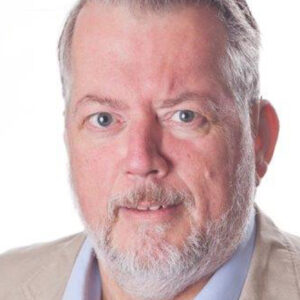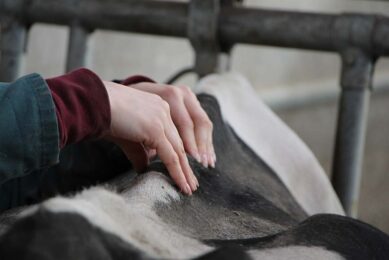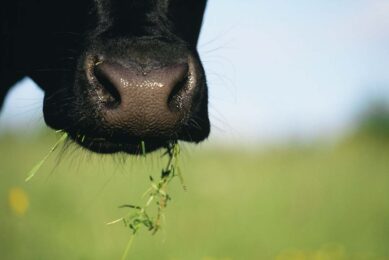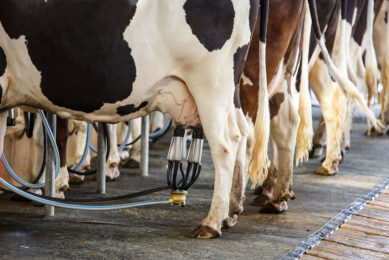Italian dairy farmers to focus on growth
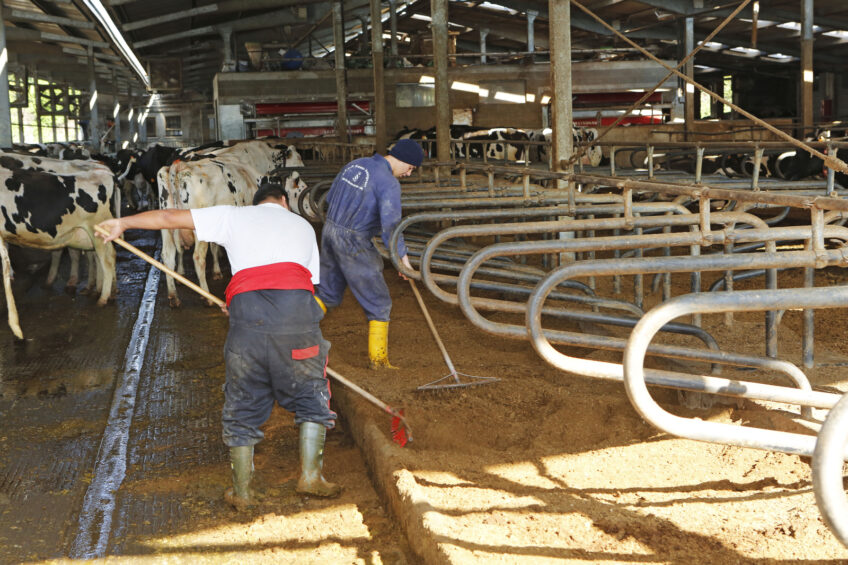
As a result of the high milk prices, the Italian Bandioli family wants to grow their dairy business at a fast pace. Their current location, on the edge of the village, forces them to grow at a new location. They start with 250 dairy cows. Where it will end is not yet sure.
They’ve made good money over the last years. That is obvious when you enter the Bandioli farm. Some of the buildings are dated, but nevertheless very well maintained. Between and around the stables, an abundance of concrete yard can be seen.
The tractors and machines are stalled in a shed. Eight robots and two feeding robots carry out the routine labour. “We have earned good money over the last years and we still do actually, despite the falling milk prices,” states Michele Bandioli. “We have invested more than a €1 million in automation, and the return of investment has been less than three years. And this will be the next step.”

Company: Marco (41), Michele (37, pictured) and Monica (34) Bandioli milk 450 Holstein dairy cows in Piubega, in the northern part of the Italian Po Valley. They have 150 hectares of which an area of 70 hectares is owned. They cultivate 100 hectares of ryegrass, followed by maize silage 30 hectares of alfalfa and 20 hectares of maize (corn cob mix). The cows produce about 13,000 kg per year.
Strategy: growth and increase of production per cow.
He turns his chair around, picks up a building construction plan and places it proudly on the desk. “We’re going to build a new farm, over a kilometre away from this location. On the current site, on the edge of the village, upscaling of the farm is not possible. The first phase, which started in June, is a barn for 250 cows on four milking robots. It will be an increase of 120 cows and a movement of 120 cows and 2 milking robots from the current location to the new farm. The space that will become available is for our young cattle of up till a year. This young stock is now housed in a rented barn 5 kilometres away. Ultimately, we want to milk at least 500 cows at the new location by the year 2021. On the current location we aim for 250 cows. But more animals are certainly possible. The limits are determined by our milk- and cost price.” The Italian dairy farmer has a clear vision of the future: “You have to have clear goals. Otherwise you’ll achieve nothing.”
American and West European influences
In terms of design, the farm looks like an American dairy farm. The production is around 13,000 kilogrammes (kg) per cow per year. The cows are kept indoors all year round. The heavy automation and relatively light mechanisation are more European inspired. There are two tractors of around 110 kW (150 hp) for the pasture work. Harvesting is done by contractors. The farm has eight milking robots and two Lely Vector feed robots. “For the automation we look at what is happening in Northwest Europe,” says Michele. “For the management, we look at how it is done in the US. I go there every year for a week and visit large scale farms to learn from their management practises. My sister Monica has just returned from a trip to the US where she delved into the latest calf rearing practises. Michele thinks that the Italian level and knowledge of the dairy sector is incompetent. The farm has a pregnancy rate of 23%, which is well above the average in the region (12%). On average, the cows are again pregnant after 110 days post calving. Heifers calf at an average of 23.5 months. Calf mortality lies at 2%.
Milk price and cost price
In 2010, the company grew from 280 to the current 450 dairy cows. “By investing in milking and feeding robots the required amount of labour has not changed,” says Michele. “We do the work with six men, but we now produce around 5 million kg of milk per year, 2 million kg more than in 2010.” Those extra kg reduce the costs to a great extent. The family is one of the 11 members of the cooperative dairy San Lazzaro, that processes around 16 million kg of milk into Grana Padano cheese each year. This type of cheese is a hard, slow ripening cheese with an EU Protected Designation of Origin. The cooperative paid in the first three months of 2016 between €0.39 and €0.41 per kg of milk and forecasts to have a minimum of €0.38 throughout the rest of the year. For consumption milk, Italian dairies only paid around €0.28 per kg in the first quarter of 2016. “Our cost price is about €0.38. With the expansion and a new barn, the milk production per cow will certainly rise. Last year, production fell by 20% in summer. That decline will be much less in the new stables, as these are equipped with much better ventilation systems. We think the replacement rate of the cows will also improve. This is currently 41%, with 11% involuntary replacement. That replacement rate could drop to 30% in the new setting. We hope that milk production will increase from 13,000 kg now towards 15,000 kg, thus reducing the cost price to €0.35 in 2017, when the new barn is running at full steam.”
Marketing milk is no problem
But is there room for more milk at the cooperative? “Not directly, but there is room to sell more consumption milk. This will lead to a drop in the average milk price we receive. We have to focus on getting the cost price down,” says Michele. He does think that the 7.5 million kg of milk produced in 2021 will get sold to the cooperative San Lazzaro. “After each expansion we have done over the years, a delivery room was created at the processor. This will probably happen again. It could mean that we have to sell a million kg of milk on the consumption market for a year or two. But that will not create problems.”
Land prices falling
A 90 ha property is the collateral for the financing of the new farm. This land, situated in the Northern part of the Po Valley, is worth around €45,000 per hectare. But land prices are falling due to the poor yields in the pig farming and field production of vegetables that have a strong presence in this part of the Po Valley. “There is little demand for land. As we are extending the number of dairy cows, we must lease extra land because of the manure legislation, which allows a maximum of three cows per hectare. We already lease 60 hectares, equalling €45,000 per year. Farmers who stop farming often offer us their land for sale or lease. In the long run we need to lease 60 hectares, but this is not a problem for us. We also plan to invest in a biogas plant. That will improve the fertiliser quality of the manure,” Michele explains. However, buying land is not the way to go for the Bandioli’s. “The money comes from the cows, not from the land.” And if the neighbour offers to sell his land? “Then we won’t walk away from buying it,” concludes Michele. It’s the same everywhere.
Join 13,000+ subscribers
Subscribe to our newsletter to stay updated about all the need-to-know content in the dairy sector, two times a week.







